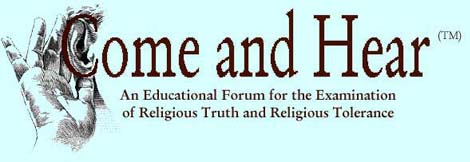New America
4. Jewish Harems in Talmud Law

There are changes in the wind. Some people may be happy, some may be unhappy. Let's go directly to the Talmud to see its laws on some social concerns.
| Navigate This Site | |
 | |
| Home | |
| Valentine | |
| Dilling | |
| Talmud | |
| The Rabbis | |
| Supplement | |
| Glossary | |
| Download | |
| Admin | |
| | |
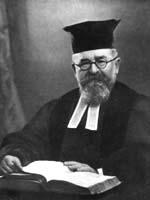
The late Rabbi Dr. Joseph H. Hertz
"Polygamy seems to have well-nigh disappeared in Israel after the Babylonian Exile … Monogamy in Israel was thus not the result of European contact. As a matter of fact, monogamy was firmly established in Jewish life long before the rise of Christianity." — The Very Reverend the Chief Rabbi of the British Empire, the late Dr. Joseph H. Hertz (13)
MISHNAH. If a man was married to two wives and they died … — Kethuboth 91a
MISHNAH. If a man who was married to three wives died … — Kethuboth 93a
MISHNAH. If a man who was married to four wives died … — Kethuboth 93b
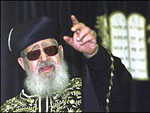
Rabbi Ovadia Yoseph, former Sephardi Chief Rabbi and reputedly the spiritual leader of the Shas political party.
"Anthropologist S. Zev Kalifon of Bar-Ilan University in Israel said the call by former Sephardi Chief Rabbi Ovadia Yoseph to legalize polygyny is part of a political movement to restore conservative traditions and lash out against popular notions of social equality.
"'They feel that the secular world which they met in Israel when they immigrated in the 1950s destroyed the patriarchal Sephardi family and its values,' said Kalifon. 'The ban on polygyny is seen as something modern, an expression of western or European values.'" — Salt Lake Tribune (8)
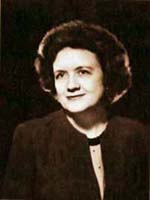
Elizabeth Dilling, in her book, The Jewish Religion: Its Influence Today, quotes Columbia University Judaic scholar Salo Wittmayer Baron. Dilling writes:
A 1952 book by Salo Wittmayer Baron, Professor of Jewish History, Literature and Institutions of the Miller Foundation, Columbia University, is entitled, A Social and Religious History of the Jews and is published by the American Jewish Committee's Jewish Publication Society of America. The chapter, "The World of the Talmud," cites the harem of King Solomon (which finished him morally and otherwise), saying its "memory kindled the imagination of polygamous Jews in subsequent ages." Although we are told [page 25] that there was no real difference between Palestinian and Babylonian Jewries fundamentally, the book states, "There are indications that Babylonian Jewish society had more polygamous features than did that of Palestine."
And: "Anecdotes like those current in regard to Rab and Rabbi Nahman [who] after arriving in a foreign city they used to advertise for women ready to marry them for the time of their sojourn ('man havya le-yoma') … In law, too, the Babylonian emphasis lay upon the Jew's right to 'marry as many wives as he is able to support.'"
… Israel first proposed extra allowances for plural wives but now seems to be screening polygamy from Christian eyes. — Dilling, (c. 1964) (20)
Professor Baron's prestige in his field is evident from the professorial chair in Judaic Studies established in his name at Columbia University. The Salo Wittmayer Baron chair is currently held by Yosef Yerushalmi. (21)
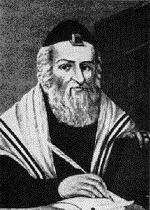
"The Wilna Gaon" (the genius of Vilna), is an affectionate name for Rabbi Eliyahu (Elijah) ben Solomon of Vilna, Lithuania, who lived from 1720 to 1797. He is indisputably one of the giants of Judaism. He is quoted as follows:
"If I would be successful, in accomplishing two things I would be idle from Torah and T'fillah and go from city to city [to get them accepted]. One is to eliminate the prohibition of Rabbeinu Gershom against taking two wives for with this the G'ulah (final redemption) will become closer, and the second that they should have bircas Cohanim every day." — as quoted by Emes L'Yaakov (3)
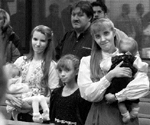
Wives of Tom Green, with children
"Husband to five women, father to twenty-nine children, Tom Green paraded his life-style on television shows, piquing the interest of American audiences and the county prosecutor, who charged Green with bigamy in April 2000 … he was convicted in May 2001 and sentenced to up to five years in prison." — Salt Lake Tribune (7)
Rabina objected: Why not assume that 'kahennah' implies twelve, and 'we-kahennah', twenty-four? It has indeed been taught likewise: 'He shall not multiply wives to himself beyond twenty-four.' And according to him who interprets the redundant 'waw', it ought to be forty-eight. — Sanhedrin 21a

You can help in the battle for Truth, Justice, and the American Way! Fight the forces of censorship and suppression of the Talmud, and bring about understanding between peoples of different faiths.
Download this site to your desktop computer.
Make CDs and distribute them to friends, neighbors, ministers, and community leaders.
Email your favorite essay to your email list.
Post your favorite essay to discussion forums.
Print your favorite essays and give them to those not on the Internet.
Flyers advertising Come-and-Hear.com can be distributed throughout your community.
 Genuine Come and Hear™ CDs do not contain executable programs. When making CDs, do not include any files that end in .exe, .com, .bat, .vbs, .doc, .pif, .sit, or .scr. The person receiving the CD should use his own browser to view the files. This helps to protect him from harmful programs and viruses.
Genuine Come and Hear™ CDs do not contain executable programs. When making CDs, do not include any files that end in .exe, .com, .bat, .vbs, .doc, .pif, .sit, or .scr. The person receiving the CD should use his own browser to view the files. This helps to protect him from harmful programs and viruses.

One for sex?
"The first recorded polygamy is that of Lemekh (Genesis 4:19). Why did he do it? A midrash suggests he wanted one wife for procreation and another for sex; the first wife would bear children and then become a living widow because her husband would ignore her, and the second wife would sterilize herself and dress up like a prostitute (Genesis Rabbah 33:2)." — Rabbi Fine (10)

Rabbi David Fine "graduated cum laude with high honors from Brandeis University in Near Eastern and Judaic Studies, received an MA in Jewish history from the graduate school of the Jewish Theological Seminary and was ordained at the Joseph Straus Rabbinical Seminary of Yeshivat HaMivtar in Efrat, Israel." — Jewish Chronicle (10)
Rabbi Fine writes a column for the Jewish Chronicle. "No question is too grand or too trivial. Just ask the Rabbi."

Polygamy Happens

The Soncino Talmud was translated by world-renowned Talmud and Hebrew/Aramaic scholars. It was the first complete English translation ever published, and it has been the standard, commonly accepted rabbi-approved English translation for more than six decades.
Accolades for Soncino. Praise for the Soncino Talmud appears on the dust jacket of the 1961 Edition:
"The rendering is accurate and scholarly … In particular the translators deserve praise for their choice of suitable equivalents for technical terms and phrases that are difficult to turn into another language." — The Times Literary Supplement
"… this translation of the Talmud will open up for the English speaking readers the most varied and indispensable index to the collective wisdom of the post-Biblical Hebrew mind, and afford direct knowledge of the ordinances which have governed and continue to govern the religious institutions and social polity of the Jewish people." — the late Rabbi Dr. A. Feldman, Dayan of the Beth Din, London
"I offer my heartiest congratulations to all who have worked together in producing this translation of the Talmud into English. They have dealt with the enormous difficulties of their tasks with remarkable skill." — The Rev. Dr. R. Travers Herford, author of Christianity in Talmud and Midrash and Talmud and Apocrypha
"The Editor, Dr. Isidore Epstein, and his band of scholars have produced a translation which is a marvel of skill in dealing with the formidable difficulties which the Talmud presents." — The Jewish Chronicle
"The Soncino Talmud is … an adornment for any library, a hallmark of intelligent Jewishness in a family … an unfailing source of inspiring information to the students of every creed and race." — Jewish Forum
"It [the Soncino Talmud] will have value for Gentile as well as Jewish scholars." — The Manchester Guardian
"These volumes are magnificently produced, and will assuredly take their place among the monuments of modern scholarship." — The Yorkshire Post
For an attestation to the usefulness of the Soncino Talmud General Index, see the Very Rev. the Chief Rabbi Dr. Israel Brodie's Foreword. (18)
ZARAH — A co-wife, a married woman
in relation to the other wives of her husband.
Polygamy is a Jewish institution. It is practiced, albeit underground, in Israel today. If the present trend to Orthodoxy among Jews continues, we can expect open polygamy to return soon.
Even for the most Westernized Jews, polygamy (polygyny) is difficult to confront. They obviously feel uncomfortable with the subject: we see them minimize it, excuse it, and defend it (for example, see The Jewish Encyclopedia, Appendix A).
Writing about marriage, the Very Reverend the Chief Rabbi of the British Empire, the late Dr. Joseph H. Hertz, states:
The Biblical ideal of human marriage is the monogamous one. The Creation story and all the ethical portions of Scripture speak of the union of a man with one wife. Whenever a Prophet alludes to marriage, he is thinking of such a union — lifelong, faithful, holy. Polygamy seems to have well-nigh disappeared in Israel after the Babylonian Exile. Early Rabbinic literature presupposes a practically monogamic society; and out of 2800 teachers mentioned in the Talmud, one only is stated to have had two wives.
Monogamy in Israel was thus not the result of European contact. As a matter of fact, monogamy was firmly established in Jewish life long before the rise of Christianity …
— Rabbi Dr. Hertz (1)
The Talmud Challenges Rabbi Dr. Hertz
Most rabbinical scholars (including Rabbi Dr. Hertz) attribute the organization of the Mishnahs to Judah the Prince. The year of his birth is given as 132 or 135 A.D. A number of these Mishnahs organized by Judah the Prince address legal problems that arise from the practice of polygamy. That suggests that polygamy was very much alive in the centuries before and after the birth of Jesus.
That polygamy was an ordinary part of Jewish life is also suggested by Rev. Dr. Israel W. Slotki's Introduction to the Tractate Kethuboth. Rev. Dr. Slotki states this of Chapter X:
CHAPTER X determines the priority of the claims to the recovery of their kethubahs and to exemption from oath of two or more wives who were married to the same husband, the relative rights of their respective heirs, and the legal position in the event of the surrender by one of the women of her claim to distrain on the buyer of her deceased husband's estate.
— Rev. Dr. Slotki (17)
(Note: When excerpting quotations from the Talmud, we sometimes omit non-germane text and footnotes. Omission of text is indicated by an ellipsis (…). To see the full text and footnotes, follow the hot link at the end of the excerpt. It is our pleasure to make available on line a number of Talmud tractates, so that you can see the excerpt in full context. We indicate unprintable Hebrew characters, words, and phrases with the symbol [H].)
This Mishnah addresses a man with two wives:
MISHNAH. IF A MAN WAS MARRIED TO TWO WIVES AND THEY DIED, AND SUBSEQUENTLY HE HIMSELF DIED, AND THE ORPHANS [OF ONE OF THE WIVES] CLAIM THEIR MOTHER'S KETHUBAH [BUT THE ESTATE OF THE DECEASED HUSBAND] IS ONLY ENOUGH [FOR THE SETTLEMENT OF THE] TWO KETHUBAHS [ALL THE ORPHANS] RECEIVE EQUAL SHARES.
— Babylonian Talmud, Tractate Kethuboth 91a
Soncino 1961 Edition page 582
This Mishnah addresses a man with three wives:
MISHNAH. IF A MAN WHO WAS MARRIED TO THREE WIVES DIED, AND THE KETHUBAH OF ONE WAS A MANEH, OF THE OTHER TWO HUNDRED ZUZ, AND OF THE THIRD THREE HUNDRED ZUZ AND THE ESTATE [WAS WORTH] ONLY ONE MANEH [THE SUM] IS DIVIDED EQUALLY.
— Babylonian Talmud, Tractate Kethuboth 93a
Soncino 1961 Edition page 590
This Mishnah addresses a man with four wives:
MISHNAH. IF A MAN WHO WAS MARRIED TO FOUR WIVES DIED, HIS FIRST WIFE TAKES PRECEDENCE OVER THE SECOND, THE SECOND TAKES PRECEDENCE OVER THE THIRD AND THE THIRD OVER THE FOURTH. …
— Babylonian Talmud, Tractate Kethuboth 93b
Soncino 1961 Edition page 595-595
Here the Sages discuss the justification for marrying multiple wives.
MISHNAH. NEITHER SHALL HE MULTIPLY WIVES TO HIMSELF (4) — ONLY EIGHTEEN. R. JUDAH SAID: HE MAY HAVE MORE, PROVIDED THEY DO NOT TURN AWAY HIS HEART. R. SIMEON SAID: HE MUST NOT MARRY EVEN ONE WHO MAY TURN AWAY HIS HEART. WHY THEN IS IT WRITTEN, NEITHER SHALL HE MULTIPLY WIVES TO HIMSELF? (5) — EVEN THOUGH THEY BE WOMEN LIKE ABIGAIL. (6)
— Babylonian Talmud, Tractate Sanhedrin 21a
Soncino 1961 Edition, page 111
Soncino Rabbinical scholar and translator Jacob Shachter amplifies the text with footnotes:
- Deut. XVII, 17.
- Ibid. From which it might be inferred that he may marry a lesser number even if they should corrupt him.
- I.e., even of the most virtuous, only eighteen are permitted, and not a single one who misleads is permitted. Abigail was the wife of Nabal the Carmelite. (I Sam. XXV, 3.) She is regarded in the Aggadah as one of the most remarkable women in Jewish history. V. Meg 15a.
— Jacob Shachter
Why Is Polygamy OK?
In the above cited Mishnah, Talmud scholar and translator Jacob Shachter tells us the Sages base their justification of polygamy on Deuteronomy 17:17. For full context, let us look at Deuteronomy 17:14-17.
- When thou art come unto the land which the LORD thy God giveth thee, and shalt possess it, and shalt dwell therein, and shalt say, I will set a king over me, like as all the nations that are about me;
- Thou shalt in any wise set him king over thee, whom the LORD thy God shall choose: one from among thy brethren shalt thou set king over thee: thou mayest not set a stranger over thee, which is not thy brother.
- But he shall not multiply horses to himself, nor cause the people to return to Egypt, to the end that he should multiply horses: forasmuch as the LORD hath said unto you, Ye shall henceforth return no more that way.
- Neither shall he multiply wives to himself, that his heart turn not away: neither shall he greatly multiply to himself silver and gold.
— Deuteronomy 17:14-17 (KJV)
We see that Deuteronomy 17:17 concerns limitation on the number of wives permitted to future kings of Israel. However, the Sages appear to understand Deuteronomy 17:17 as a rule for all men. They also understand it to permit rather than prohibit multiple wives.
What Is the Limit? 4, 12, 24, 48?
The Sages disagree about the number of wives permitted.
GEMARA. … Rabina objected: Why not assume that 'kahennah' implies twelve, and 'we-kahennah', twenty-four? It has indeed been taught likewise: 'He shall not multiply wives to himself beyond twenty-four.' And according to him who interprets the redundant 'waw', it ought to be forty-eight.
— Tractate Sanhedrin 21a
Soncino 1961 Edition, page 113
Levirate Marriages
LEVIRATE MARRIAGE. The marriage between a man and the widow of his dead brother who has died childless. (V. HALIZAH).
In Jewish Law, if a husband dies, and he and his wife have had no children, the oldest brother of the dead man may take the widow as a wife, even if the brother is already married. The law is based on Deuteronomy 25:5-10
- If brethren dwell together, and one of them die, and have no child, the wife of the dead shall not marry without unto a stranger: her husband's brother shall go in unto her, and take her to him to wife, and perform the duty of an husband's brother unto her.
- And it shall be, that the firstborn which she beareth shall succeed in the name of his brother which is dead, that his name be not put out of Israel.
- And if the man like not to take his brother's wife, then let his brother's wife go up to the gate unto the elders, and say, My husband's brother refuseth to raise up unto his brother a name in Israel, he will not perform the duty of my husband's brother.
- Then the elders of his city shall call him, and speak unto him: and if he stand to it, and say, I like not to take her;
- Then shall his brother's wife come unto him in the presence of the elders, and loose his shoe from off his foot, and spit in his face, and shall answer and say, So shall it be done unto that man that will not build up his brother's house.
- And his name shall be called in Israel, The house of him that hath his shoe loosed.
Widow May Be Raped
There is a difference between Old Testament law and Talmud law on levirate marriages. Under Talmud law, the widow who does not want to take the brother as her husband may be raped, thereby effecting the marriage.
GEMARA. … A YEBAMAH IS ACQUIRED BY INTERCOURSE. Whence do we know [that she is acquired by intercourse? — Scripture saith, [14a] Her husband's brother shall go in unto her, and take her to him to wife. Then perhaps she is like a wife in all respects? (6) — You may not think so. For it was taught: I might think that money or deed can complete her acquisition, just as intercourse does; therefore it is written, and perform the duty of an husband's brother unto her', (7) teaching, intercourse alone completes the acquisition of her, but money or deed does not complete the acquisition of her. Yet perhaps what is the purpose of 'and perform the duty of an husband's brother unto her'? It is that he can taker her by force? (8) — If so, Scripture should have stated, 'and perform the duty of a husband's brother', (9) why [add] 'unto her'? Hence both are learnt from it. (10)
— Babylonian Talmud, Tractate Kiddushin 13b-14a
Soncino 1961 Edition page 56
The translator, Rabbi Dr. H. Freedman, amplifies the text with footnotes:
- To be acquired by money or deed too?
- I.e., have intercourse with her. Ibid. This is really a repetition of the first part of the verse, and therefore emphasizes intercourse.
- That being taught by the repetition.
- This would have sufficed to emphasize intercourse alone as a means of acquisition.
- 'Unto her' implying even against her will.
— Rabbi Dr. Freedman
The doctrine is repeated in Tractate Yebamoth:
GEMARA. … Another [Baraitha] taught: Her husband's brother shall go in unto her, in the natural way; and take her, even though in an unnatural way; and perform the duty of a husband's brother unto her, only the cohabitation consummates her marriage, but neither money nor deed can consummate her marriage; and perform the duty of a husband's brother unto her, even against her will.
— Babylonian Talmud, Tractate Yebamoth 54a
Soncino 1961 Edition page 357
Laws of Yebamoth Regulate Levirate Marriages
An entire tractate of the Talmud, Tractate Yebamoth, consisting of 15 chapters, is devoted to regulating levirate marriages. Rev. Dr. Israel W. Slotki made this comment about levirate marriages in his Introduction to the Yebamoth; (halizah is the shoe ceremony described in Deuteronomy 25:9, cited above).
In practical life, however, both marriage and halizah bristle with difficulties and are hedged in by a complexity of problems.
— Rev. Dr. Slotki (11)
Rev. Dr. Slotki made further comment about the relationship between the various wives in a polygamous Jewish family. It was apparently bitter, and expected to be so. We have already seen the definition of zarah, co-wife. Talmud scholar Rev. Dr. Israel W. Slotki, in his translation of the Soncino Tractate Yebamoth, informs us that the word zarah means literally "rival" or "adversary," and is derived from "oppression." In his very first footnote, he tells us that the relationship between the wives was often bitter.
Heb., zarah, [H] 'rival'. Where a husband has more than one wife, each woman is a zarah in relation to the other. The term is derived from [H] which signifies oppression, hence 'rival', 'adversary', as in I Sam. I, 6 (cf. Kimhi a.l.), or 'to tie up', 'to bind', hence 'associate', 'co-wife'.
— Rev. Dr. Slotki (12)
This translation of the Hebrew word zarah is confirmed by The Wisconsin Jewish Chronicle "Ask the Rabbi" columnist, David Fine, who is spiritual leader of Lake Park Synagogue in Milwaukee.
Interestingly, the Hebrew word for co-wives is 'tzara' — enemies!
— David Fine (10)
The reader is referred to the Tractate Yebamoth to learn more about levirate marriages and other sexual laws and customs. We also include the Biblical account of the three-way relationship between Abraham, Sarah, and Hagar. See Appendix B: Polygamy and the Slave Hagar.
Levirate Marriages Do Not Explain Polygamy
When discussing polygamy, many rabbinical commentators focus on levirate marriages. However, as we can see in the above Mishnahs governing men with two, three, and four wives, and the argumentation about how many wives are permitted (up to 48?) levirate marriages did not wholly explain Jewish polygamy. It is not credible that a man could acquire 4, 18, 24, or perhaps even 48 wives by marrying the widows of his 4, 18, 24, or 48 brothers who died childless. Moreover, Tractate Kiddushin (not available at Come and Hear™) deals with the laws of betrothal. The Soncino translator, Rabbi Dr. H. Freedman, states of Chapter II:
It treats … the simultaneous betrothal of more than one woman.
— Rabbi Dr. Freedman (19)
Clearly polygamy is not confined to levirate marriages.
Jewish Encyclopedia on History of Polygamy
In 1906, the Jewish Encyclopedia published a history of polygamy among the Hebrews and Jews. (4) After defining polygamy, the article states:
While there is no evidence of a polyandrous state in primitive Jewish society, polygamy seems to have been a well-established institution, dating from the most ancient times and extending to modern days. The Law indeed regulated and limited this usage; and the prophets and the scribes looked upon it with disfavor. Still all had to recognize its existence, and not until late was it completely abolished. At no time, however, was it practiced so much among the Israelites as among other nations; and the tendency in Jewish social life was always toward MONOGAMY.
— Jewish Encyclopedia (4)
We have included some excerpts from that article describing the early days of Hebrew/Jewish polygamy in the Appendix A: The Jewish Encyclopedia on Polygamy. Notice the writers' apologetic tone. The text may still be available at the Jewish Encyclopedia website. (4)
Jewish Polygamy Is Banned in Middle Ages
In the following Jewish Encyclopedia excerpts, many of the citations in the original text have been omitted for easy readability.
In the Middle Ages, Rabbi Gershom b. Judah (960-1028) convened a synod and urged Jews to give up polygamy …
— Jewish Encyclopedia (6)
An express prohibition against polygamy was pronounced by R. Gershom b. Judah, "the Light of the Exile" (960-1028), which was soon accepted in all the communities of northern France and of Germany. The Jews of Spain and of Italy as well as those of the Orient continued to practise polygamy for a long period after that time, although the influence of the prohibition was felt even in those countries. Some authorities suggested that R. Gershom's decree was to be enforced for a time only, namely, up to … 1240 C.E. … probably believing that the Messiah would appear before that time; but this opinion was overruled by that of the majority of medieval Jewish rabbis. Even in the Orient monogamy soon became the rule and polygamy the exception; for only the wealthy could afford the luxury of many wives …
The Jews of Spain practiced polygamy as late as the fourteenth century. The only requirement there was a special permit, for which a certain sum was probably paid into the kings treasury each time a Jew took an additional wife
The Spanish Jews, as well as their brethren in Italy and in the Orient, soon gave up these practises; and today, although the Jews of the East live under Mohammedan rule, but few cases of polygamy are found among them.
— Jewish Encyclopedia (4)
Ban Due to Christian Opinion
The Jewish Encyclopedia gives the impression — but does not actually state — that polygamy was banned by Gershom b. Judah because Jews disapproved of the practice. However, another explanation has been offered. The Salt Lake Tribune, in an article entitled "Polygamy's Practice Stirs Debate in Israel," reports of polygamy:
But the practice has been banned for Jews in Europe since the 11th century, when rabbinate leaders sought to ease tensions between Jews and their Christian neighbors, who considered polygamy barbaric.
— Salt Lake Tribune (8)
A contemporary Jewish proponent of polygamy, Emes L'Yaakov, author of The Orthodox Jewish Pro Polygamy Page, states that polygamy was practiced by Europeans but was eventually banned. He says that this is the source of European resentment against Jewish polygamy.
Since the Christians were now banned from something that had been normal practice for many years, they resented the fact that the Jews could continue to have more than one wife. When goyim resent Jews, Jews get killed. Therefore to prevent massacres of the Jews, Rabbeinu Gershom banned polygamy.
— Emes L'Yaakov (3)
Jewish American Polygamy Circa 1906
Let's return to the Jewish Encyclopedia.
In spite of the prohibition against polygamy and of the general acceptance thereof, the Jewish law still retains many provisions which apply only to a state which permits polygamy. The marriage of a married man is legally valid and needs the formality of a bill of divorce for its dissolution, while the marriage of a married woman is void and has no binding force …
The Reform rabbis in conference assembled (Philadelphia, 1869) decided that "the marriage of a married man to a second woman can neither take place nor claim religious validity, just as little as the marriage of a married woman to another man, but, like this, is null and void from the beginning." Still, with the majority of Jews, this is not even an open question, and the marriage of a married man is considered just as valid as that of an unmarried man; it not only requires the formality of divorce in the case of separation, but also makes him subject to the laws of relationship; so that he can not afterward marry the wife's sister while the wife is living, nor can he or his near relatives, according to the laws of consanguinity, enter into matrimonial relations with any of her near relatives.
— Jewish Encyclopedia (4)
The article is authored by the Executive Committee of The Jewish Encyclopedia, and Julius H. Greenstone, a Philadelphia, Pa. rabbi.
In summary of the above, then, the Jewish Encyclopedia (published 1906) states:
- Jewish law still permits polygamy,
- In 1869, Reform Judaism in the US attempted to squash polygamy,
- Despite the efforts, US Jews still think polygamy laws are valid,
- US Jews believe the second marriage of an already married man is just as valid as the first marriage of an unmarried man.
Use First Wife for Babies, Second as Prostitute
Why might a man seek more than one wife? This question still holds interest. Rabbi Fine, of the Jewish Chronicle's "Ask The Rabbi" page, suggests an answer:
The first recorded polygamy is that of Lemekh (Genesis 4:19). Why did he do it? A midrash suggests he wanted one wife for procreation and another for sex; the first wife would bear children and then become a living widow because her husband would ignore her, and the second wife would sterilize herself and dress up like a prostitute (Genesis Rabbah 33:2).
— Rabbi Fine for The Wisconsin Jewish Chronicle (10)
Contemporary Polygamy
The Salt Lake City Tribune reports on polygamy in modern day Israel:
Polygamy may be banned by the state constitution and abolished by the predominant religion, but it is still practiced by ultra-orthodox followers of the faith, some who want it made lawful to avoid sticky legal and moral questions.
Sounds like Utah, but it's Israel.
… But the push in Israel for legalized "polygyny," the alternative term for having more than one wife at one time, stems not from a shortage of marriage-age men, an abundance of single women or an upswing in demand for multiple brides. Anthropologist S. Zev Kalifon of Bar-Ilan University in Israel said the call by former Sephardi Chief Rabbi Ovadia Yoseph to legalize polygyny is part of a political movement to restore conservative traditions and lash out against popular notions of social equality.
"They feel that the secular world which they met in Israel when they immigrated in the 1950s destroyed the patriarchal Sephardi family and its values," said Kalifon. "The ban on polygyny is seen as something modern, an expression of western or European values."
— Salt Lake Tribune (8)
Two Orthodox Jews Speak on Polygamy
Now let us return to Emes L'Yaakov's Orthodox Jewish Pro Polygamy Page. He gives us insight into a contemporary Orthodox Jew's view of polygamy:
Christian commentators with a perverted perspective following in the Roman Catholic tradition have tremendous difficulty with Yaakov [Jacob] having four wives. This very point shows to what extent the Roman church is not a continuation of Jewish traditions, society and morality, but rather the continuation of Greek and Roman pagan traditions, society and morality …
Rome and the church were our framework for one thousand nine hundred years. During that period, we defended ourselves as best we could. Among the defenses was to ban polygamy, something considered by G-d and his Torah to be moral, fine and normal … Polygamy was part of the founding of our people, and was part of Hashem's d-vine plan for us.
… because of our exile in Europe, we picked up certain alien values. We somehow took polygamy, something practiced by our Patriarchs, by King David, etc. throughout our history, and associated [it] with gilui arayos, the depraved sexual practices which are practiced or condoned by the peoples surrounding us. We must divorce ourselves from this goyish attitude. Polygamy was part of the founding of our people, and was part of Hashem's d-vine plan for us.
Jewish Attitude To Polygamy: But what about Yaakov's situation? What about more than one wife? The clear halacha is that both min haTorah (on a Torah level) and mid'rabbanan (through rabbinical legislation) a man can have as many wives as are willing to marry him (as long as he can support them). No one implies that this is less than moral nor in the least bit abnormal.
— Emes L'Yaakov (3)
It seems that Emes L'Yaakov is not trying to impress the Christian Right, and thus speaks his mind freely. Let us contrast this with the statements made by Rabbi Daniel Lapin, author of America's Real War. We have met Rabbi Lapin before, in America's New Government Church and Sex with Children by Talmud Rules; he presents himself as a an ally of the Christian Right, and he is a favorite speaker of organizations such as Concerned Women for America. In America's Real War, Rabbi Lapin argues against pluralism in America:
We may all believe as we wish; however, translating our beliefs into the actions sometimes demanded by those beliefs may conflict with Judeo-Christian belief. When they do, it is the actions informed by Christian belief that will prevail.
— Rabbi Lapin (15)
Rabbi Lapin gives, as an example, the struggle of the Mormon state, Utah, to overcome objections to polygamy and gain entry into the Union in the late 1800s. While giving his readers the impression that he, as a rabbi, disapproves of polygamy and shares Christian disgust with it, he fails to mention Jewish polygamy laws and practices to his Christian readers.
Jewish/Mormon Cooperation?
It would be only natural and understandable if two powerful organizations with fundamental doctrinal interests in making polygamy legal in the US would join hands. Expect behind-the-scenes Mormon-Jewish cooperation in changing polygamy laws and the attitudes of Americans toward polygamy. The alliance may be particularly effective in light of America's Talmudization.
America Is Rapidly Becoming Talmudized
In 1991, the US Congress declared the Talmudic Noahide Laws to be the basis "upon which our great Nation was founded" (see America's New Government Church). Under Noahide Law regulations, idolaters (which includes Christians by definition) are put to death.
In 1999, the Supreme Court agreed to consider an amicus brief based wholly on Talmudic law (see Sentence and Execution).
In November 2002, the American Orthodox Jewish community held a kosher dinner in the Supreme Court building to celebrate the establishment of the National Institute for Judaic Law. (22) The dinner was attended by 200 people, including three Supreme Court Justices. The purpose of the Institute is to introduce Talmudic laws into the US legal system and law schools.
It is thus the clear civic duty of every American to become intimately acquainted with the Talmud. Read articles at:
America's New Government Church: http://www.come-and-hear.com/editor/america_1.html
Death Penalty: http://www.come-and-hear.com/editor/capunish_1.html
Kosher Dinner: http://www.come-and-hear.com/editor/cp-jp-11-09-2002 and http://www.come-and-hear.com/editor/cp-jw-01-08-03
Indeed, the paths of two stars in the Orthodox and Mormon communities have already crossed. The two stars are Dr. Laura Schlessinger, an Orthodox Jew and a member of a Chabad Lubavitch synagogue, and the former Mormon Congressional representative Matt Salmon (R-Arizona). When a psychology study allegedly promoting pederasty was published, Schlessinger condemned it on the airwaves, and Rep. Salmon condemned it in the House. When Salmon's resolution condemning the study passed unanimously on July 12, 1999, Dr. Laura told her listeners she had in Rep. Salmon a "major new hero." (5)
Mormons are reputed to have an interest in child brides. For the Jewish teachings on child brides, see Sex with Children by Talmud Rules and Talmud Daughters Become Talmud Wives.
How close is Mormon-Jewish cooperation? The Jewish Week of June 6, 2003 reports that 300 Mormons — headed by a Mormon who traveled from Utah — cleaned up a neglected Jewish graveyard in Queens, NY. (23)
Expect New Voices
Now comes another voice to the polygamy debate, this one named TruthBearer.org. The founder of this group is not a Jew, but a self-proclaimed conservative Christian. This conservative Christian, though, does not want to follow in the footsteps of Jesus and the Christian saints — he wants to follow in the footsteps of Jacob, David, and Solomon. He wants to have lots of wives. If one can tell religion by surname, this is an odd one for a Christian — the founder of TruthBearer.org is named Mark Henkel. (16)
We can expect the Christian polygamists to demand social and legal changes.
Let us think about this carefully. Gentile laws make polygamy illegal in the United States, but Talmud law makes it permissible. Talmud law allows a man to divorce his wife at any time, for any reason (see And So a Talmud Marriage Ends). He may have to pay her a settlement, but in fact there are ways he can avoid making any payment. Jewish sexual law will bring about many changes in our society. Before we jump, we should look and ask: Is this the direction we want to go?
See also:
- Talmud Daughters Become Talmud Wives
- Really, Really, Kosher Sex
- Talmud Laws of Menstruation
- Sex with Children by Talmud Rules
Thank you for your consideration of the above,
Carol A. Valentine, Ear@Come-and-Hear.com
July 14, 2003 ( This article is on line at http://www.come-and-hear.com/editor/america_4.html )
|
Navigate Carol Valentine's America Under the Talmud — Will It Work for US? | |||||
 Howdy! |
 The Roadmap |
 Censorship |
 Death Penalty |
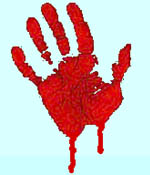 Blood Ritual |
 New America |
| Navigate This Site | |
 | |
| Home | |
| Valentine | |
| Dilling | |
| Talmud | |
| The Rabbis | |
| Supplement | |
| Glossary | |
| Download | |
| Admin | |
Endnotes:
- This and other Come and Hear™ Studies on Talmudic Judaism can be found online:
- http://www.come-and-hear.com/editor
- The Jewish Religion: Its Influence Today by Elizabeth Dilling, complete with all 300 exhibits, can be found online:
- http://www.come-and-hear.com/dilling
- Soncino Babylonian Talmud tractates, with Forewords, Introductions, Glossary, List of Abbreviations, and footnotes. Now you can study the Babylonian Talmud in full context and with the running commentary of the finest scholars of Judaism:
- Tractate Berakoth: http://www.come-and-hear.com/berakoth
- Tractate Shabbath: http://www.come-and-hear.com/shabbath
- Tractate Yebamoth: http://www.come-and-hear.com/yebamoth
- Tractate Kethuboth: http://www.come-and-hear.com/kethuboth
- Tractate Nedarim: http://www.come-and-hear.com/nedarim
- Tractate Nazir: http://www.come-and-hear.com/nazir
- Tractate Sotah: http://www.come-and-hear.com/sotah
- Tractate Gittin: http://www.come-and-hear.com/gittin
- Tractate Baba Kamma: http://www.come-and-hear.com/babakamma
- Tractate Baba Mezi'a: http://www.come-and-hear.com/babamezia
- Tractate Baba Bathra: http://www.come-and-hear.com/bababathra
- Tractate Sanhedrin: http://www.come-and-hear.com/sanhedrin
- Tractate Abodah Zarah: http://www.come-and-hear.com/zarah
- Tractate Horayoth: http://www.come-and-hear.com/horayoth
- Tractate Niddah: http://www.come-and-hear.com/niddah
- Tractate Tohoroth: http://www.come-and-hear.com/tohoroth
- Search the Talmud http://www.come-and-hear.com/tindex.html
- Download all the above resources for local study, CD, or mirror web site:
- http://www.come-and-hear.com/download
Appendix A: The Jewish Encyclopedia on Polygamy
The Jewish Encyclopedia's article on polygamy (4) appears in Volume X, which bears a publication date of 1906. While assuming a critical attitude to the practice, the Encyclopedia eventually concedes it is sanctioned by Jewish law, and then infers polygamy is still being practiced in the US. In the following excerpts, many of the citations in the original text have been omitted for easy readability. This text may still be available at the Jewish Encyclopedia website.
That the ideal state of human society, in the mind of the primitive Israelite, was a monogamous one is clearly evinced by the fact that the first man (Adam) was given only one wife … Abraham had only one wife; and he was persuaded to marry his slave Hagar only at the urgent request of his wife, who deemed herself barren … Jacob married two sisters, because he was deceived by his father-in-law, Laban. He, too, married his wives' slaves at the request of his wives … among the Judges, however, polygamy was practised, as it was also among the rich and the nobility … Elkanah, the father of Samuel, had two wives, probably because the first (Hannah) was childless. The tribe of Issachar was noted for its practise of polygamy. Caleb had two concubines … David and Solomon had many wives, a custom which was probably followed by al the later kings of Judah and of Israel … Jehoiada gave to Joash two wives only &hellip
The Mosaic law, while permitting polygamy, introduced many provisions which tended to confine it to narrower limits, and to lessen the abuse that might arise in connection with it. The Israelitish woman slave who was taken as a wife by the son of her master was entitled to all the rights of matrimony … even after he had taken another wife … one who lived in bigamy might now show his preference for the children of the more favored wife … The king should not "multiply wives" (Deut. xvii.17; Sanh. 21a, where the number is limited to 18, 24, or 48, according to the various interpretations given to II Sam. xii, 8); and the high priest is, according to the rabbinic interpretation of Lev. xxi.13, commanded to take one wife only (Yeb. 59a; comp. Yoma 2a).
The same feeling against polygamy existed in later Talmudic times … Polygamy, was, however, sanctioned by Jewish law and gave rise to many rabbinical discussions. While one rabbi says that a man may take as many wives as he can support Raba, in Yeb. 65a), it was recommended that no one should marry more than four women (ib.44a) …
— Jewish Encyclopedia (4)
Appendix B: Polygamy and the Slave Hagar
In these Biblical passages are shown two incidents from the life of Abraham (known earlier as Abram) and his women. These incidents are reasonably predictable from the Jewish laws on marriage, polygamy, and slavery.
In the first passage, Abraham and his wife Sarai decide that Sarai's slave Hagar, should bear a child for Abraham. Hagar 's consent is not considered and not mentioned. After Hagar becomes pregnant, Sarai and Hagar become polygamy rivals (zarah), and Sarai treats her cruelly. In desperation, Hagar escapes into the wilderness. She is saved from death by an angel.
Genesis 16:1-7 (KJV)
- Now Sarai Abram's wife bare him no children: and she had an handmaid, an Egyptian, whose name was Hagar.
- And Sarai said unto Abram, Behold now, the LORD hath restrained me from bearing: I pray thee, go in unto my maid; it may be that I may obtain children by her. And Abram hearkened to the voice of Sarai.
- And Sarai Abram's wife took Hagar her maid the Egyptian, after Abram had dwelt ten years in the land of Canaan, and gave her to her husband Abram to be his wife.
- And he went in unto Hagar, and she conceived: and when she saw that she had conceived, her mistress was despised in her eyes.
- And Sarai said unto Abram, My wrong be upon thee: I have given my maid into thy bosom; and when she saw that she had conceived, I was despised in her eyes: the LORD judge between me and thee.
- But Abram said unto Sarai, Behold, thy maid is in thine hand; do to her as it pleaseth thee. And when Sarai dealt hardly with her, she fled from her face.
- And the angel of the LORD found her by a fountain of water in the wilderness, by the fountain in the way to Shur.
Later Sarai (Sarah) conceives a child. The second passage tells that, after children are born to both the free woman (Sarah) and the slave (Hagar), dissention arises again between the two, and Abraham intervenes. Abraham gives Hagar bread and water and drives her off into the wilderness with her infant son. Hagar has nowhere to go and fully expects to die. An angel assures Abraham that the child will survive; no guarantee is given for the woman.
Genesis 21:9-16 (KJV)
- And Sarah saw the son of Hagar the Egyptian, which she had born unto Abraham, mocking.
- Wherefore she said unto Abraham, Cast out this bondwoman and her son: for the son of this bondwoman shall not be heir with my son, even with Isaac.
- And the thing was very grievous in Abraham's sight because of his son.
- And God said unto Abraham, Let it not be grievous in thy sight because of the lad, and because of thy bondwoman; in all that Sarah hath said unto thee, hearken unto her voice; for in Isaac shall thy seed be called.
- And also of the son of the bondwoman will I make a nation, because he is thy seed.
- And Abraham rose up early in the morning, and took bread, and a bottle of water, and gave it unto Hagar, putting it on her shoulder, and the child, and sent her away: and she departed, and wandered in the wilderness of Beersheba.
- And the water was spent in the bottle, and she cast the child under one of the shrubs.
- And she went, and sat her down over against him a good way off, as it were a bow shot: for she said, Let me not see the death of the child. And she sat over against him, and lift up her voice, and wept.
